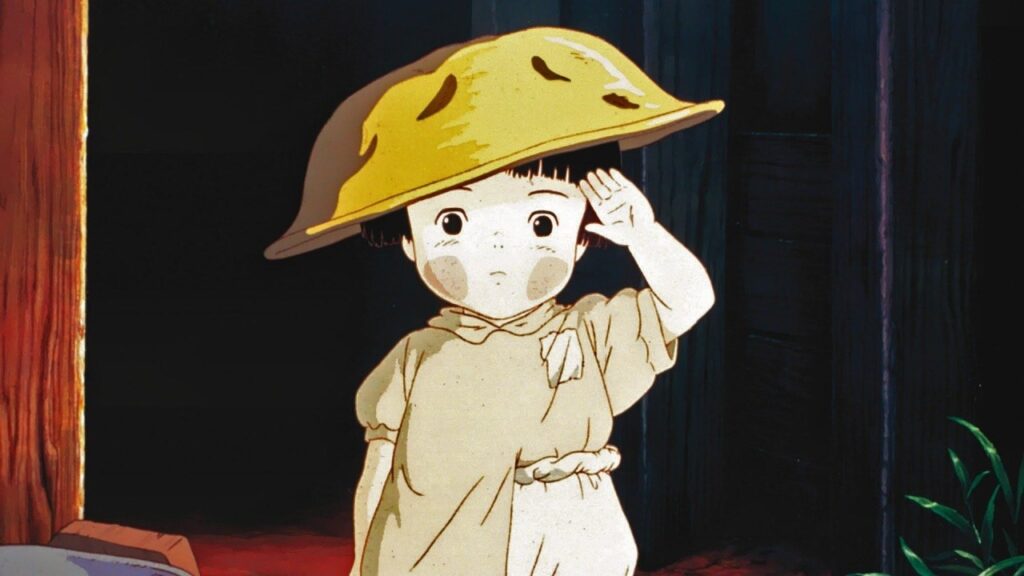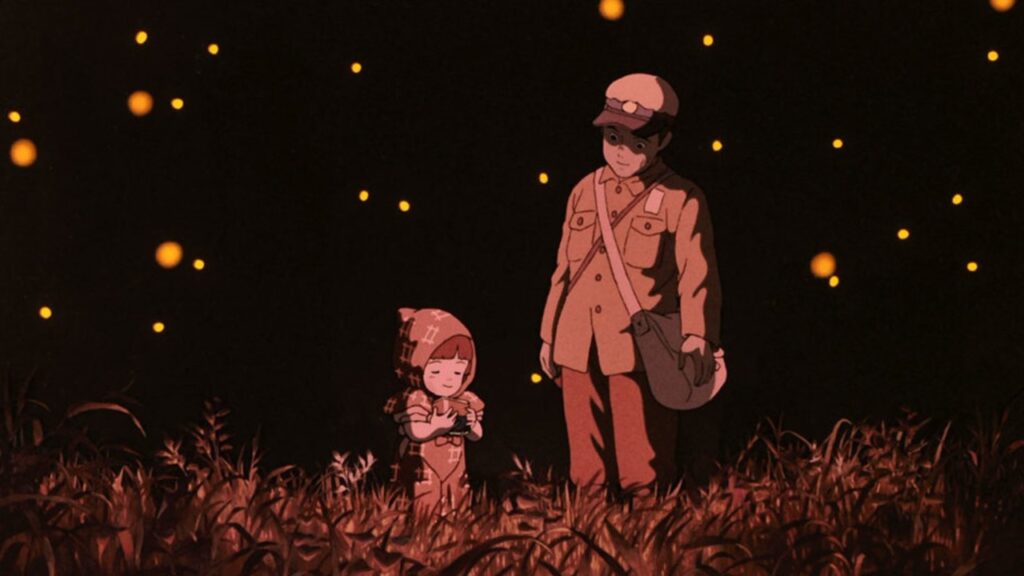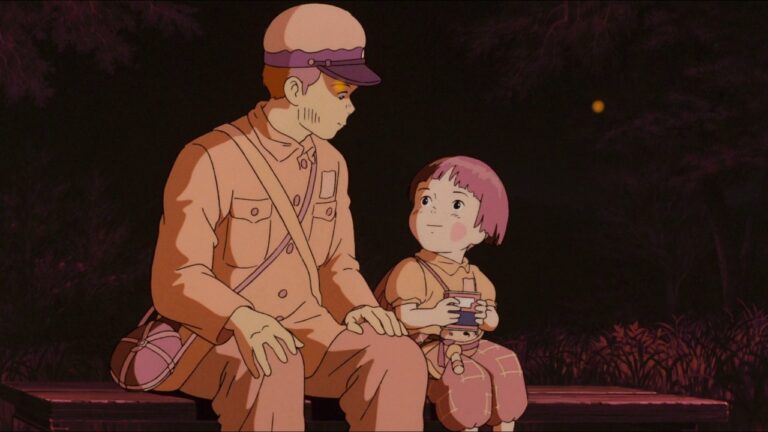Released in 1988 under Studio Ghibli, ‘Grave of the Fireflies‘ stands as one of the most emotionally devastating films ever made. Directed by Isao Takahata and adapted from Akiyuki Nosaka’s semi-autobiographical short story, the film captures the immense cost of war through the quiet suffering of two children. It is not a film that seeks to glorify tragedy but rather to make us sit with it, to see what happens to the most vulnerable when society falls apart. Watching it, we realize that the story is not simply about death; it is about how humans behave when the world forgets its compassion.
Set in the final months of World War II, the film follows 14-year-old Seita and his four-year-old sister Setsuko as they attempt to survive in a Japan reduced to ashes. From the beginning, we are told how it ends, Seita’s death in a train station on September 21, 1945. His spirit, reunited with Setsuko’s, looks back on their final months, and we as viewers are drawn into a world where hope flickers and fades like the fireflies that light their shelter.
A Shelter of Dreams in a World Destroyed

After their mother is killed in an American firebombing, Seita and Setsuko are left to fend for themselves. They move in with a distant aunt who initially offers them shelter, but as resources dwindle, she grows resentful. Her words turn sharp, her kindness fades, and the siblings are made to feel like burdens. The moment they leave her house marks their quiet act of rebellion; they choose dignity over cruelty, even if it means facing hunger alone.
In an abandoned bomb shelter, Seita and Setsuko create a fragile world of their own. We see them laugh, play, and chase fireflies, trying to reclaim a semblance of childhood amid destruction. For a brief time, their world feels safe. But we also know this peace will not last. Their food runs out, Seita begins to steal, and Setsuko’s health declines rapidly. The scene where she mistakes marbles for candy, believing they are fruit drops, breaks something inside us. It is not just her hunger that hurts; it is the fact that she still tries to find joy and give her brother comfort.
Takahata’s storytelling never manipulates us with sentimentality. The tragedy unfolds naturally, like a slow-burning truth. When Seita returns from the city after learning Japan has surrendered, he brings food back to the shelter only to find his sister delirious and close to death. Her faint smile when she thanks him one last time is both an end and an acknowledgment. After she dies, Seita cremates her body and places her ashes in the candy tin that we recognize from the opening scene. That small tin becomes a vessel of memory, a symbol of everything that was once sweet and innocent, now gone.
Fireflies serve as one of the film’s most profound symbols. They illuminate the children’s nights, beautiful yet fleeting, just as bombs light up the sky with destruction. Setsuko buries the dead fireflies and asks why they had to die so soon, unknowingly mirroring her own fate. The metaphor does not need explanation; it lives within the story, reminding us that war spares no innocence, not even the smallest lives.
Seita and Setsuko as Witnesses to Injustice

The film also challenges the idea of collective responsibility. Takahata once said it was not simply an anti-war film but a reflection on how people behave in times of hardship. The aunt’s cruelty, the doctor’s indifference, and the townspeople’s apathy all become complicit in the children’s suffering. The war may be the setting, but the real tragedy lies in how easily society abandons its empathy when survival becomes scarce.
We cannot discuss Grave of the Fireflies without acknowledging the truth behind it. Nosaka wrote his story as an apology to his own sister who died under his care during the war. He carried that guilt throughout his life, and through Seita and Setsuko, he gave it voice. Knowing this makes the film even more painful, it reminds us that what we are watching is not fiction but a reflection of countless real lives lost to hunger, neglect, and indifference.
Even decades later, the film continues to divide viewers. Some interpret it as an anti-war statement, others as a critique of pride and self-reliance. But perhaps that is the point. Grave of the Fireflies leaves us without a single answer because war itself never offers one. It only leaves chaos of what was lost.
In its closing sequence, Seita and Setsuko’s spirits watch over a modern, rebuilt Kobe, surrounded by the quiet shimmer of fireflies. They are no longer hungry, no longer alone. Whether we see this as peace or as a haunting reminder of what humanity allowed to perish depends on us. After all, the film concludes not with resolution but with silence, leaving us to question what kind of world permits such suffering and whether, even now, we have truly learned from the ashes left behind.




